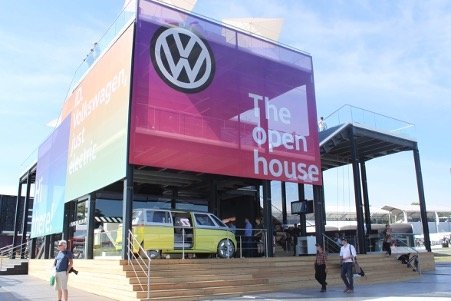Steep Hill To Climb For VW ID

If you haven’t heard already, a twenty-year record was smashed at the Goodwood Festival of Speed (FOS) last weekend.
In what could be the passing of an era, an all-electric Volkswagen ID.R shaved more than a second off the famous Hillclimb, clocking 39.90 seconds. In the process it destroyed the 41.18 clocked by a McLaren F1 car back in 1999.
Volkswagen’s limelight-stealing display, was a strategic masterstroke that aimed to champion their performance R range, as well as exemplify their much publicised €50bn investment into electrification. The ID.R joined both sides of the Venn diagram – demonstrating both performance and electrification in blistering style.
Big Hopes
For VW it couldn’t be a moment too soon, having emerged from the dieselgate crisis it is now playing catch-up on the race to electrify its vast portfolio, a race with existential significance.
From 2020, EU legislation will require manufacturers to hit a target of 95 grammes of CO2 per kilometre for every vehicle they sell.
If they go over the threshold, they could face fines set at €95 per gramme over the level, multiplied by the total numbers of vehicles sold. The implications in potential fines are eye-watering. VW’s job - like other manufacturers - is made harder now the diesel market has taken a tumble. Compared to their petrol equivalent, CO2 emissions in the latest diesel cars are around 20% lower.
Little wonder they are pulling out the stoppers to demonstrate their green credentials. According to Mike Orford, Head of Press and Publications at VW UK, the group has used successive global car shows to reveal their line-up of future electric vehicles.
The countdown began at the 2016 Paris Motor Show, when the ID concept was revealed. The ID was to be the first in a series of battery powered models designed from the ground up to be an electric vehicle, using their MEB (Modularer Elektrobaukasten) platform.
Then, on May 8th this year in Berlin, the production version was formally launched and given a name, the ID.3. At the same announcement, order books were opened for 30,000 first edition cars.
To date, pre-sales are progressing well – according to Orford, 20,000 of the Golf-sized vehicles have been claimed, despite the fact that full prices have yet to be revealed and the vehicles won’t be available until late 2020 (it is said pricing is likely to be equivalent to a typical Golf Diesel).
The next on schedule is VW’s electric SUV the ID CROZZ. The model, which will come in an optional 4-wheel drive version, targets the VW Tiguan segment and is set be revealed in its full production glory at the Frankfurt Motor Show on September 10th, before going on sale in 2022.
The luxury sedan the ID. VIZZION, will then follow, ushering in a new era of autonomy with fully autonomous capability possible by 2025, if not sooner (2023) according to a VW representative.
Others include the cool and cute Campervan the ID BUZZ, as well as a larger SUV the ID. ROOMZZ and the ultimate lifestyle icon, the ID. BUGGY. In a seismic nod towards collaboration, the BUGGY is being offered up as a platform for other coachbuilders to construct alternative body designs.
Market expectations
Given sales of EVs represent a tiny portion of VW’s current base, the success of the ID.-range is paramount. Under EU rules, each electric vehicle sold earns a “supercredit” that can be used to help manufacturers offset other vehicles that exceed CO2-polluting thresholds.
Perhaps more importantly, VWs shift to electric will enable it to sustain and build the momentum of sales it enjoys in China. In 2018 China recorded sales of 2.2m plug-in EVs, more than double the level of the USA. And with a burgeoning range of emerging local EV-brands, it is fast becoming a global leader in electric vehicle sales, R&D and production.
With China now accounting for some 50% of Volkswagen’s total global sales volume of 6.2m vehicles, the race to deliver a coherent, robust EV strategy is now mission critical.







